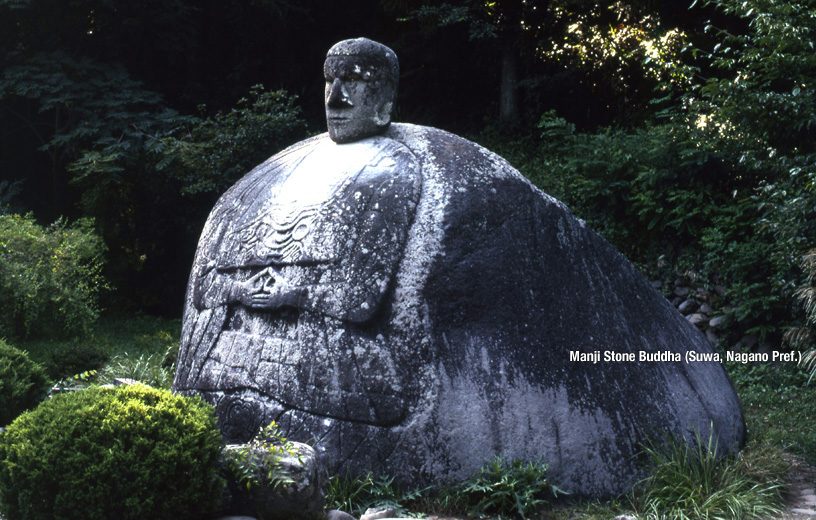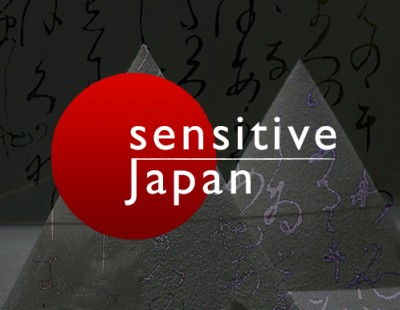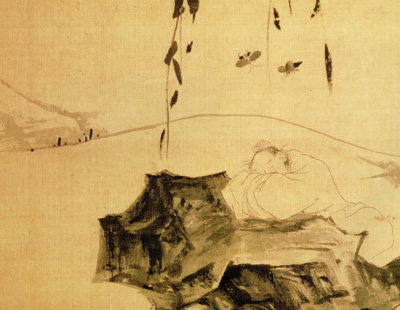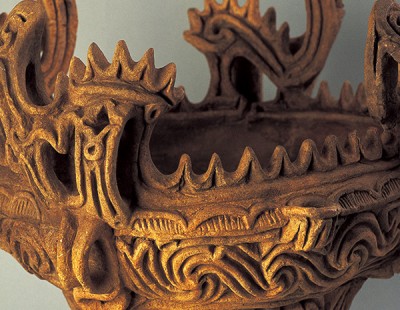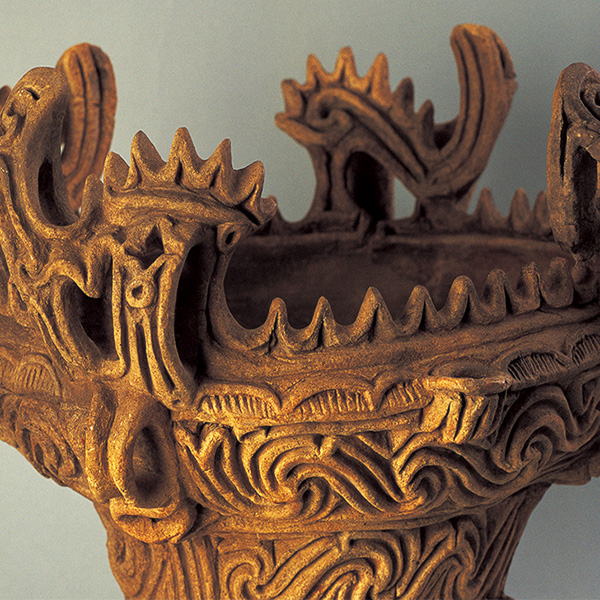Right after celebrating Halloween and Christmas, Japanese families visit shrines and temples on New Year’s Day. They get married in a church, hold their funerals at a Buddhist temple, celebrate Shichi-Go-San for the growth and health of their children in a Shinto temple, and nobody thinks twice about it.
It is often claimed that the Japanese have a very superficial attitude to faith and religion. But actually there are temples and shrines all over the place, and you often see people join their hands in prayer. Apparently, the Japanese view of faith also seems to be colored with peculiar sensations.
Kami, gods and God
The Japanese word kami means something that transcends human knowledge. The sun, the moon, the stars, mountains and seas, plants, even insects and fish, all sorts of natural objects can be kami. Thunder and the wind were considered kami. The Chinese character 神 (“deity”) was originally a hieroglyphic representation of a lightning bolt, so it was surely a natural choice for kami when Chinese characters were assigned to Japanese words 1500 years or so ago..
Never mind the gods of Greek and Roman mythology, but the use of the same character for the omnipotent divinities of the monotheistic religions, in particular the God of Christianity, has caused no end of misunderstandings and confusion. In fact, when Christianity was first introduced in Japan by Spanish and Portuguese missionaries in the 16th century, the Japanese seem to have been well aware of the considerable difference between the new God and their own kami, and his name was written as “Deus” (in katakana) or with characters meaning the “Lord of Heaven” or “Emperor of Heaven.” Conversely, it might have been better to translate the Japanese word kami as “essences” or “spirits,” rather than the conventional “gods.”
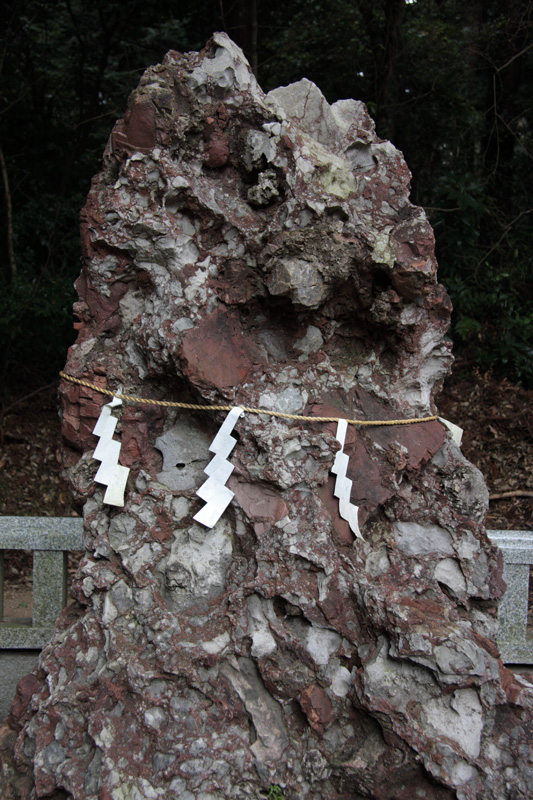
“Sazare stone” at Kashima Jingu Shrine, Ibaraki Pref. The stone was believed to grow thanks to the kami lodging inside.
Kami and Buddhas
The gods of Buddhism are also firmly established in Japan. A Buddha was originally somebody who had attained enlightenment, in particular the Buddha, Siddhartha Gautama, but as Buddhism developed, Bodhisattvas, Tathagatas and various amalgamated divinities too became known as Buddhas. Now, if Buddhism is considered polytheistic, then, logically, Buddhas are also “gods.” Nevertheless, while the character 神 was used for both the time-honored kami of Japan and the Christian God, a different character, 仏, was employed for Buddhas, as if the panoply of Japanese kami were somehow closer to the absolute god of monotheism than to the Buddhas.
What makes the nature of the Japanese kami even harder to understand is the syncretism between Buddhism and Shinto, which began almost as soon as Buddhism arrived in Japan. This was a phenomenon where indigenous deities where jumbled together with the Buddhist pantheon and reorganized into a single faith. While the kami and Buddhas kept their own names, some kami were regarded as avatars of Buddhas, or vice versa. Buddhist temples were built within the precincts of Shinto shrines, and kami were worshipped as guardian deities at Buddhist temples. In the Edo period, there were many “religious facilities” that were hard to tell whether they were Shinto or Buddhist. It was only with modernity and the Meiji government’s policy of separating Shinto and Buddhism that the distinction became clearer again. Indeed, it was only after Meiji that the word Shinto entered common usage. But ordinary people had never been fussy about the distinction between kami and Buddhas, and when the Japanese today set out for a New Year’s visit, most are not particularly conscious of whether it is a Buddhist temple or a Shinto shrine they are going to.
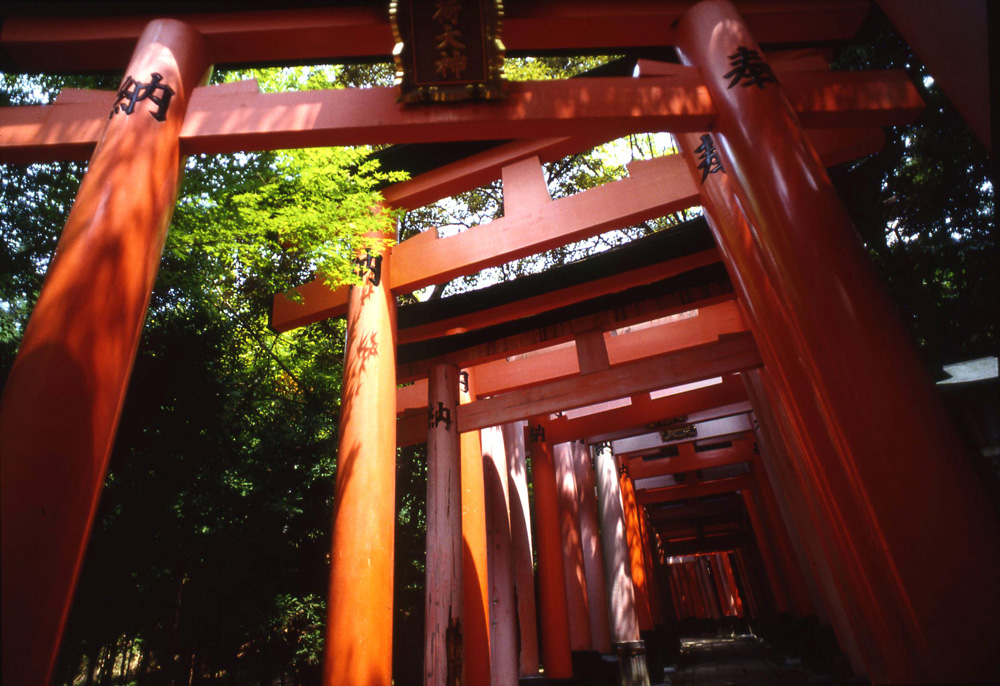
Fushimi Inari Shrine in Kyoto. Inari was a Japanese kami that was equated with a Buddhist dakini.
Is Christmas Christian?
Symbolic of how little the Japanese care about the origins of their deities are the Seven Lucky Gods. Believed to bring good fortune, tiny pilgrimages around their respective places of worship have been popular ever since medieval times. However, the group of seven includes both ancient Japanese kami and imported Buddhist and Taoist gods. Behind this apparent “anything goes” approach of the Japanese to the divine is a stance of accepting faith as a sensory experience, as opposed to faith as a logical set of doctrines. Although it might seem that anything goes, kami or Buddhas that are sensorially unacceptable will never become popular. Consequently, as long as they are sensorially convincing, the Japanese will gladly embrace both Christmas and Halloween, perhaps even Easter.
For that matter, Christmas itself was originally reportedly a festival for Saturn, the god of agriculture of Ancient Rome, and Halloween was a Celtic autumn festival to celebrate the harvest and banish evil spirits. Christianity too has never been that strict about excluding other religions. On the contrary, most religions, including the monotheistic ones, have a long history of skillfully absorbing and syncretically incorporating elements of other creeds and then propagating them as their own. Quite a few of the Buddhist gods have their origins in other faiths, such as Hinduism or Zoroastrianism. Maybe there is nothing particularly unprincipled about the Japanese people enjoying Christmas after all.
Feeling the Gods
The idea that the Japanese had a “sensorial” grasp of kami means precisely that the kami themselves were sensory presences from the very beginning. Kami were something you felt. It was only under the influence of Buddhist statues and paintings that kami were depicted and images enshrined. Shrines also gained their current form influenced by Buddhist architecture.
The “divine object” worshipped at old shrines may be a mirror, a stone, a sword, or even an empty box with nothing in it whatsoever. Or it may be a mountain, a rock, or a big tree. But these objects in themselves are not the kami; rather, they are places where the kami descend and take up temporary lodging at appropriate times. In the Japanese word for “shrine,” 神社 (jinja), the second character (社) originally meant a provisional building for the kami (神) to stay. Accordingly, ancient shrines were also temporary structures, a custom that is still upheld for example at the Ise Grand Shrine, which is completely rebuilt every 20 years.
To these temporary dwelling places the kami would descend accompanied by sounds. The whistling of the wind or the rustling of the leaves were considered signals that the kami had arrived. Sometimes the noises were more violent: kaminari, the Japanese word for “thunder,” literally means a “kami roar.”
Perhaps kami, and the ability to feel their presence, is at the root of the traditional Japanese approach to analysis.
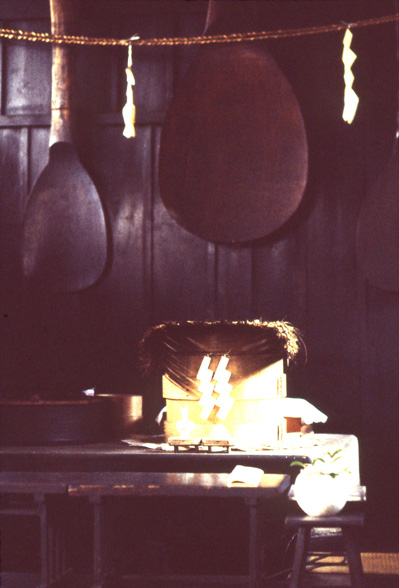
“Narukama Shinji” divination ritual at Kibitsu Shrine, Okayama Pref.
The sounds of the steaming pot are interpreted as messages from the kami.
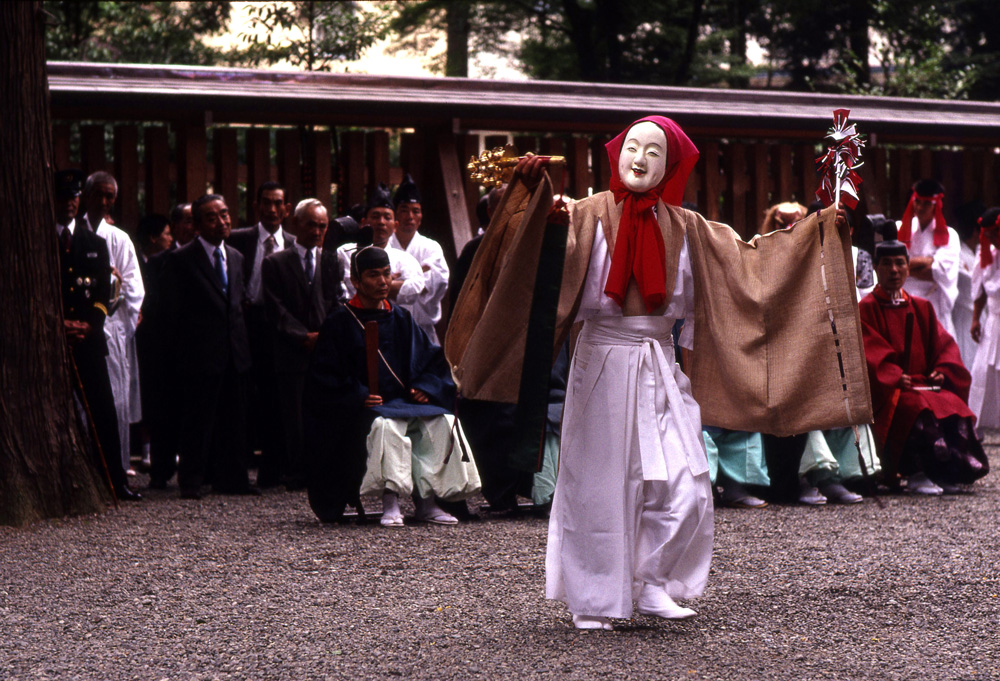
Takakicho-kagura dance at Takakicho, Miyazaki Pref.
“Kagura” was originally a place where kami and people were united. Later, the word came to denote the songs and dances performed in that place.
The Importance of Not Understanding
Everything in creation could become kami in Japan. However, the kami were by no means permanently in residence; you had to hone your senses in order to know when the kami where around. It seems hard to create a systematic faith or any rigorous religious doctrines based on such kami. For sure, there is no lack of sublime religious writings by Shinto priests and monks, but those books were virtually unrelated to the common people. Another example of the extremely sensorial nature of Japanese worship can be seen in the use of scriptures.
Most Japanese people only come into contact with scriptures at funerals and other Buddhist rituals. The sutras chanted there are mainly Chinese translations of ancient Indian texts, and almost unintelligible to the average listener. The same is true of the incantations of Shinto priests; they may be in Japanese, but the contents are unfathomable. However, most Japanese appreciate such incomprehensible words and sermons precisely because they are incomprehensible. Rather than the contents of the scriptures, it is the sound, in particular the quality of the chanting voices, that determines the value.
The fact that Christianity, which arrived in Japan in the 16th century, never really took root in the country was not only because it was prohibited by the suspicious authorities. It may also have been because its doctrines were conveyed in simple Japanese words, which many people felt lacking in value. Incidentally, the “Kirishitan” faith that was clandestinely transmitted in Japan after the prohibition came to identify the Virgin Mary with the Bodhisattva Kannon, and grew more and more esoteric until it was radically different from the initial Christian creed.
The Paper-thin Difference between Oni and Kami
The counterpart of kami is oni. The Chinese character for oni is 鬼, which means the spirit of a dead person, or something rough and frightening like an ogre or demon, but the Japanese word oni may originally have meant a “grown-up soul” or a “hidden kami.” Oni are not necessarily in conflict with the kami, like the Devil in the West. It was rather a word with a fairly close nuance to kami.
When the Yamato Imperial Court was established in ancient Japan, oni came to refer to renegade clans and rebels who refused to obey the central government and who were depicted as vicious spider monsters, and to outlaws like Shuten-doji, who was transformed into one of the most powerful ogres of Japanese folklore. Meanwhile, according to Onmyodo, an occult divination system imported from China, wicked oni were believed to come and go from the inauspicious northeastern direction, which became known as the “Oni Gate.” In Onmyodo, northeast was called ushitora (“ox-tiger,” after animals in the Chinese zodiac assigned to the directions), and for that reason Japanese oni were often depicted with ox horns on their head and wearing a tiger-skin loincloth.
Oni were also considered a kind of yokai, as in the Hyakki Yagyo (“Night Parade of One Hundred Demons”). Yokai weren’t really goblins or demons, but old natural or manmade objects in which spirits had entrenched themselves over the years. In other words, just like kami, oni were spirits that had come from somewhere to take up lodging in various objects. In fact, we might even say that oni and kami had almost the same character. It would be easy to think that those that were bad for people were oni, and the others were kami, but it was not as simple as that. Far from it.
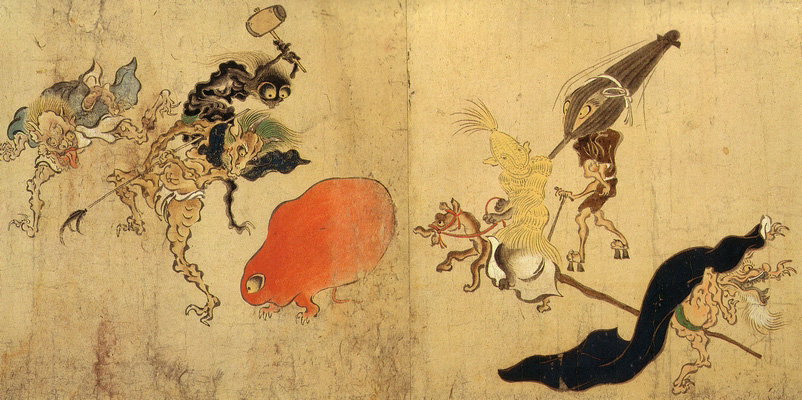
Hyakki Yagyo Emaki (“Night Parade of One Hundred Demons”) scroll. In the Heian period, old tools and animals were believed to become oni (yokai) that paraded through the night.
People Becoming Oni and Kami
In the Heian period, the idea of vengeful spirits was born. People who died bearing grudges would come back as ghosts to get their revenge and bring disaster. The classic example is Sugawara no Michizane. He was a high-ranking official and scholar who was brought down by the foul machinations of his rivals, and he died embittered in exile. Soon afterwards, the capital was struck by a series of natural disasters, and the Imperial Court determined that Michizane’s resentment was the cause. Many picture scrolls depict Michizane at that time as an angry demon. In order to placate him, he was enshrined as Tenjin, the kami of scholarship, at the Kitano Tenmangu Shrine. In other words, this was a man who became an oni who became a kami.
In Japan, it is by no means uncommon for kami to become Buddhas, or for people to become oni or kami. Most visitors to shrines and temples are not especially concerned about who or what is enshrined there. People who claim to dislike Tokugawa Ieyasu have no strong qualms about clapping their hands in prayer at the Toshogu Shrine in Nikko, where he is enshrined. Much less reason to feel uncomfortable about celebrating Christmas or Halloween. It is the Japanese style of faith.
Most Japanese will probably feel a sense of mystery in a church or mosque too. It might seem incongruous on the face of it, but deep down the sense of powers beyond mere humans is still alive. In the Edo period, even unbelievers controlled their behavior by saying that they “wouldn’t do things they couldn’t do facing the Sun.” The Sun, the symbol of all of creation, was always watching. Over the ages, ancient beliefs have mixed and merged with various forms of Buddhism, Taoism, Confucianism, Christianity and other faiths and become part of Japan’s culture. But perhaps after all this time it is still the Sun that the Japanese remain conscious of in daily life.
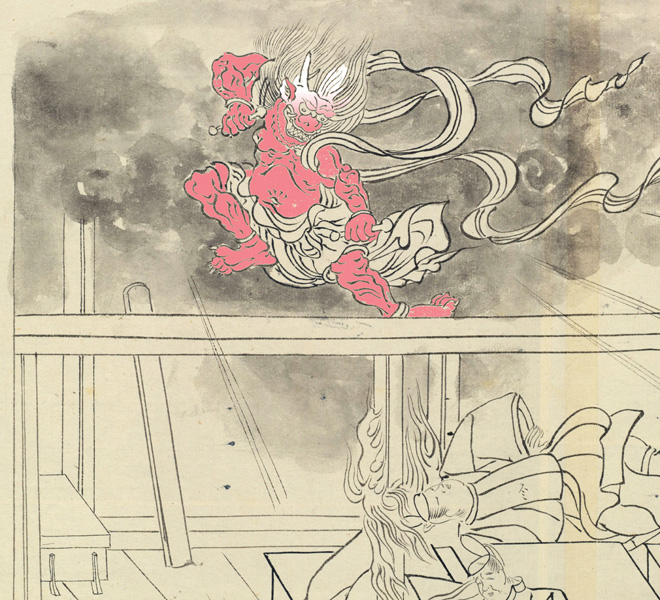
The vengeful ghost of Sugawara no Michizane depicted as an oni, the God of Thunder.
From the Kitano Tenmangu Engi Emaki picture scroll.
